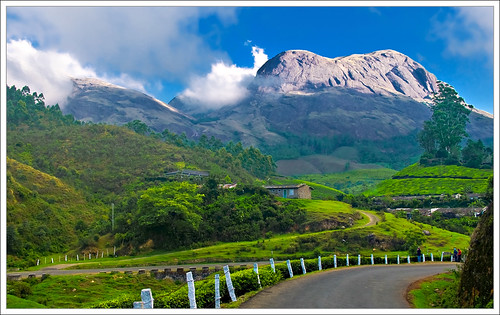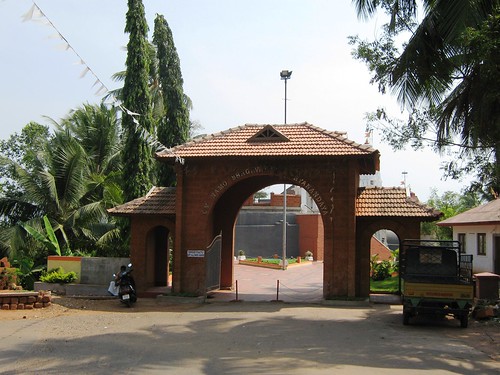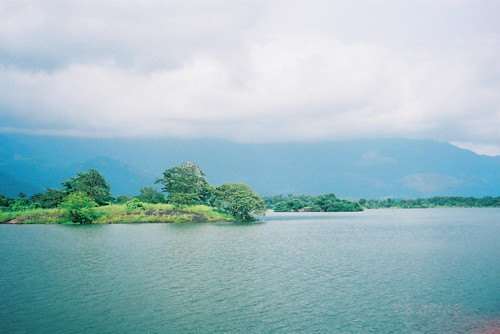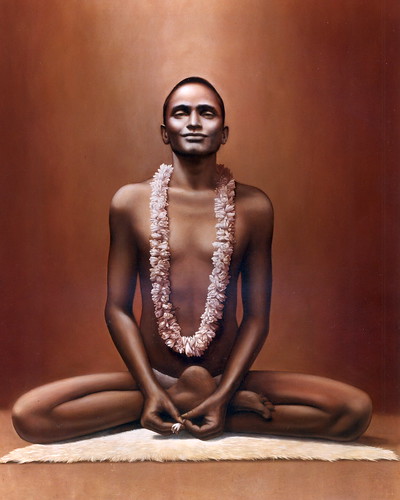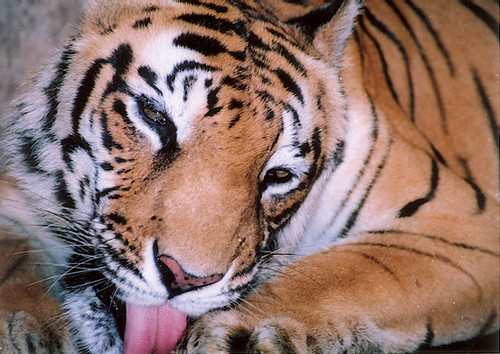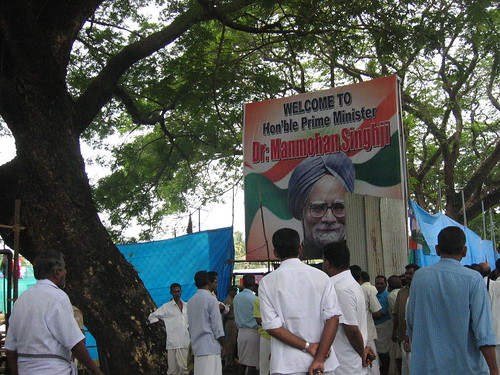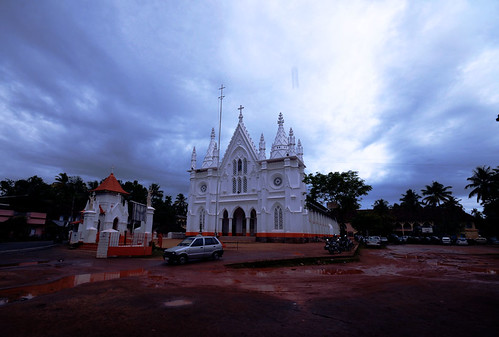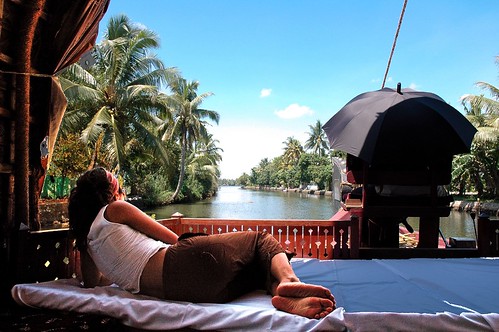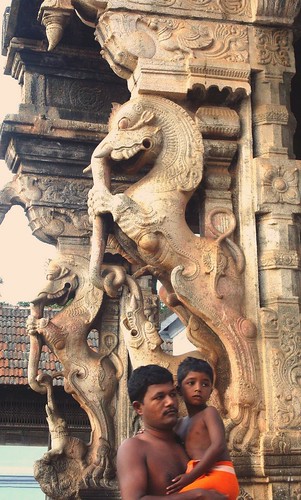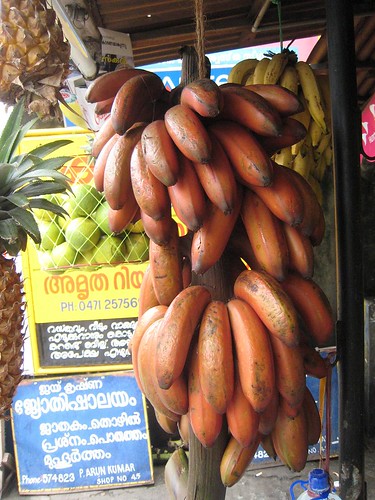Several opposition parties organised a Jan Aakrosh Diwas (public outrage day) on Monday to protest against demonetisation of high value currency notes. The parties said they do not seek a rollback of the scheme but want urgent measures to help rural India, especially the farmers stranded without cash. The Congress party, leading the agitation, was the first to call for protests. Others joined them later. The Congress said they did not call for a Bharat Bandh. Only the Left Front had called for Bharat Bandh.
The protests were more or less peaceful. There were almost no protests in several states. A state-wise account of the protests, in brief, compiled from various news reports follows.
Andhra Pradesh
The response to the strike call was lukewarm in Andhra Pradesh. The ruling Telugu Desam Party (TDP) did not support bandh. Though Congress too did not support it, it took part in protests and torched effigies of PM Narendra Modi at various places. The main opposition party, YSR Congress, of the state and the Left Front parties, tried to disrupt bus service and to shut shops. However, the response was poor. The Chief Minister N. Chandrababu Naidu was the lone top politician to consistently demand the ban of 500 and 1,000 rupee notes.
Bihar
Road traffic and normal life were mostly not disrupted in Bihar, but rail traffic was affected with 15 trains stranded at various places. The Congress held a Jan Akrosh Diwas march in Patna. The supporters of the Left such as CPI, CPI (M), CPI (ML) and others blocked trains at Bhagalpur, Gaya, Jehanabad, Muzaffarpur and Patna stations. The Bihar Chief Minister Nitish Kumar, who supports demonetisation, has said that his party, JDU, is opposed to the protests.
Goa
The Congress, NCP, AAP and CPI (M) organised token protests in Goa. The Congress held protests near the main office of State Bank of India in the capital, Panaji.
Himachal Pradesh
The Himachal Pradesh government (Congress-led) did not participate in Bharat bandh.
Jammu and Kashmir
Police detained Congress party supporters participating in Jan Aakrosh Diwas rally in Jammu.
Karnataka
The Congress and CPI (M) held rallies in Bengaluru. The Congress government in Karnataka said it would mark the Aakrosh Diwas rather than a bandh. The state Education Department had allowed colleges and schools to be closed, but schools were mostly open. Public transport was not affected.
Kerala
Cabinet ministers of the ruling Left Democratic Front (LDF) and MLAs of CPI (M) participated in a protest march in Thiruvananthapuram, the capital city. The bandh disrupted normal life in the state. Schools, colleges, shops, public transport and offices remained nonfunctional. Even private vehicles were stopped by protestors in north Kerala. In some places auto-rickshaws were plying. Patients visiting the Regional Cancer Centre and railway passengers were transported in Police vehicles. Sabarimala pilgrims and marriage parties were exempted from bandh. It’s the peak tourist season in Kerala. So, the government exempted tourists from the bandh.
Maharashtra
The NCP called for protest marches in several districts. The Congress party held a Jan Aakrosh march from Kalina in Mumbai.
Meghalaya
In the state capital Shillong, Congress workers organised a rally, holding posters that read ‘organised loot’, ‘legalised plunder’ and ‘monumental mismanagement of demonetisation’.
Nagaland
The Nagaland Pradesh Congress Committee staged a protest rally in the commercial centre Dimapur, and the District Congress Committees held rallies at district headquarters.
Odisha
The BJD-led government, which backs demonetisation, ordered schools and colleges to close, fearing law and order deterioration. But Maoists supported bandh. Congress supporters and workers of the Centre of Indian Trade Unions (CITU) affiliated to CPI (M) protested before the RBI office in Bhubaneswar.
Tamil Nadu
The Dravida Munnetra Kazhgam (DMK) held protests in Chennai. The leader of the opposition M K Stalin and a party worker were detained by police.
Telangana
The ruling party Telangana Rashtra Samithi (TRS) decided not to support bandh. Though the Congress too stayed away citing inconvenience to traders, it staged protests and torched effigies of PM Narendra Modi at various places. Life was normal, except a number of auto-rickshaws going off the roads.
Tripura
Life was disrupted in Tripura as the Left Front organised Bharat Bandh. Vehicles remained off the roads. Offices, shops, educational institutions and banks were closed. Rail transport was disrupted as workers of the leftist parties blocked trains.
Uttar Pradesh
The Samajwadi Party (SP) workers torched an effigy of the Prime Minister in Allahabad. Leaders of both BSP and SP said that they are not enforcing Bharat Bandh but they are only protesting against demonetisation. Normal life was not affected in the capital Lucknow as the traders union refused to shut shops. Markets, including Aminabad, Hazratganj, conducted business as usual. Shops in Shahganj market in Agra remained open though Monday was a weekly off day.
Uttarakhand
Life was normal in Uttarakhand on Monday, with business establishments and educational institutions remaining open. However, the Congress held rallies at all district headquarters.
West Bengal
Life was normal in West Bengal despite the Left Front call for bandh. Public transport and markets were functioning normally. The strike was opposed by the ruling Trinamool Congress (TMC). So, the state government ordered all employees to attend offices, with some exceptions. The Chief Minister Mamata Banerjee joined a protest rally in Kolkata. Banerjee wants demonetisation to be reversed. The leftists, including CPI (M) and CPI, staged protests.


